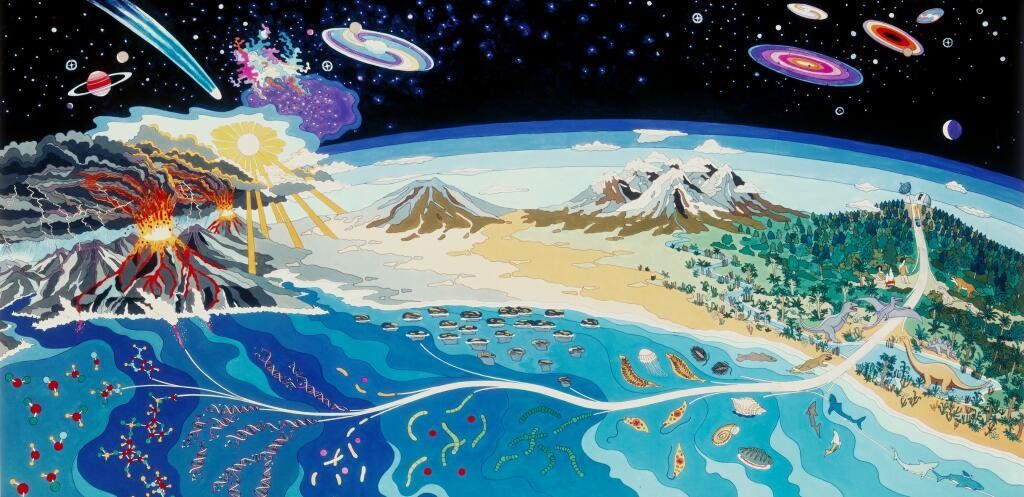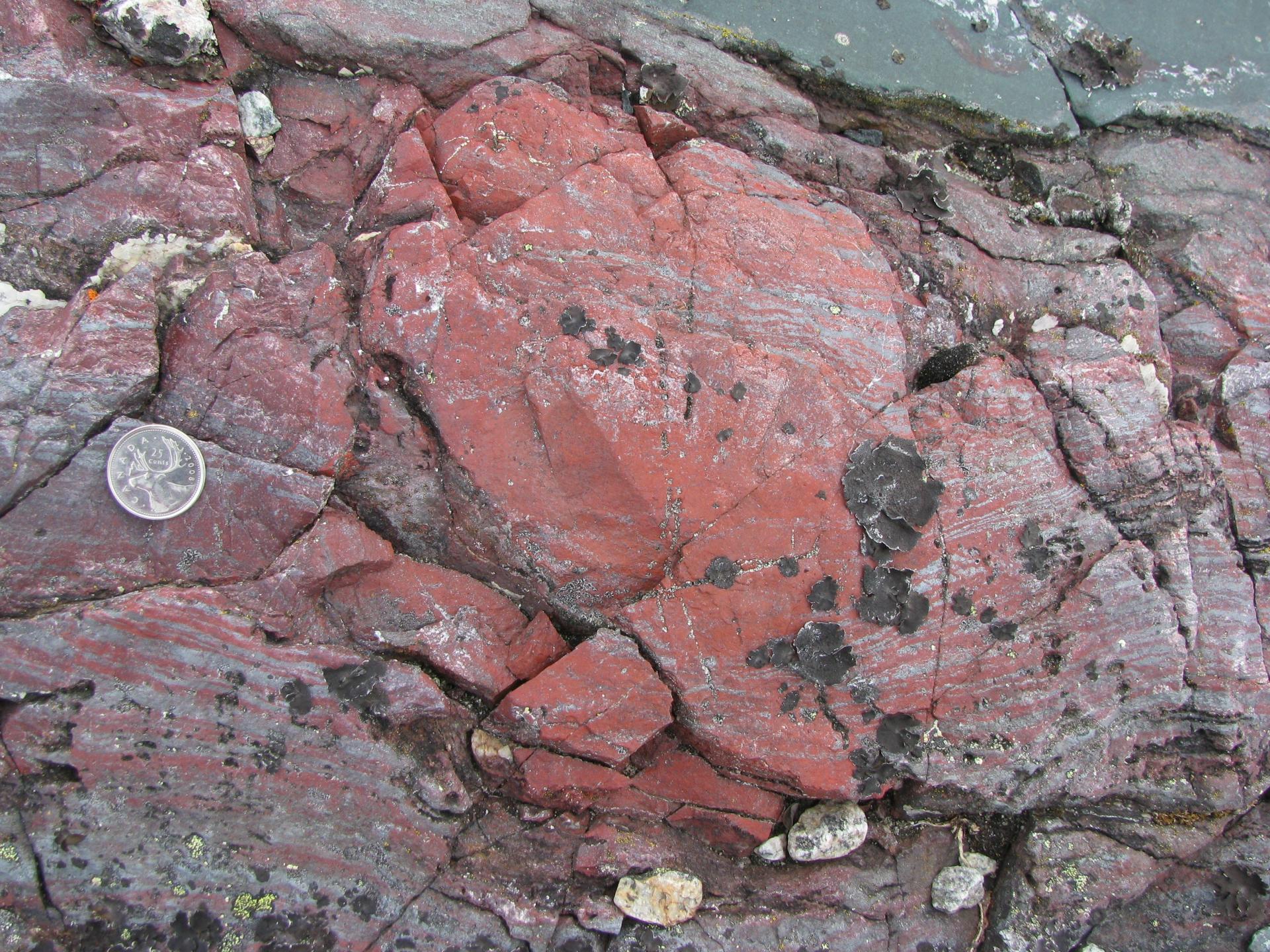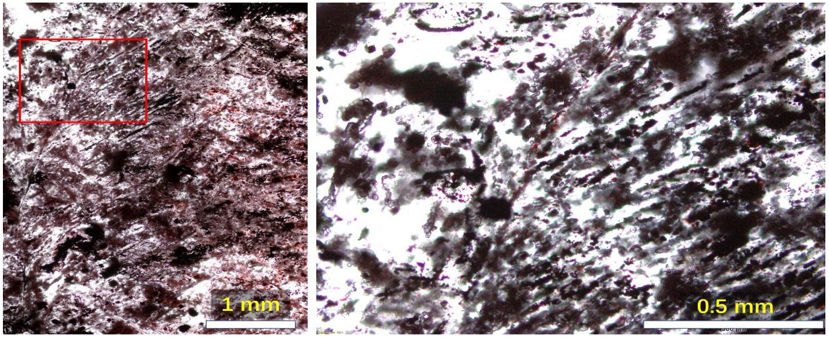Diverse microbial life existed on Earth at least 3.75 billion years ago, suggests a new study led by CUG-Wuhan and UCL researchers that challenges the conventional view of when life began.
For the study, published in Science Advances on April 13, the research team analysed a fist-sized rock from Quebec, Canada, estimated to be between 3.75 and 4.28 billion years old. In an earlier Nature paper*, the team found tiny filaments, knobs and tubes in the rock which appeared to have been made by bacteria.
However, not all scientists agreed that these structures – dating about 300 million years earlier than what is more commonly accepted as the first sign of ancient life – were of biological origin.
Now, after extensive further analysis of the rock, the team have discovered a much larger and more complex structure – a stem with parallel branches on one side that is nearly a centimetre long – as well as hundreds of distorted spheres, or ellipsoids, alongside the tubes and filaments.

The researchers say that, while some of the structures could conceivably have been created through chance chemical reactions, the “tree-like” stem with parallel branches was most likely biological in origin, as no structure created via chemistry alone has been found like it.
The team also provide evidence of how the bacteria got their energy in different ways, finding mineralised chemical by-products in the rock that are consistent with ancient microbes living off iron, sulphur and possibly also carbon dioxide and light through a form of photosynthesis not involving oxygen.
These new findings, according to the researchers, suggest that a variety of microbial life may have existed on primordial Earth, potentially as little as 300 million years after the planet formed.
Lead author Dr Dominic Papineau (China University of Geosciences and UCL Earth Sciences, London Centre for Nanotechnology, Centre for Planetary Sciences) said: “Using many different lines of evidence, our study strongly suggests a number of different types of bacteria existed on Earth between 3.75 and 4.28 billion years ago.”
“This means life could have begun as little as 300 million years after Earth formed. In geological terms, this is quick –about one spin of the Sun around the galaxy.”
“These findings have implications for the possibility of extraterrestrial life. If life is relatively quick to emerge, given the right conditions, this increases the chance that life exists on other planets.”
Prof. Zhenbing She (China University of Geosciences, Wuhan), who participated in the study said: “One of the major lines of evidence for such old life comes from the spectroscopy of the samples. It is the “fingerprint” that reveals diagnostic chemical bonds in minerals.”
“When spectroscopy is done for images, we were able to see the distribution of various phases, such as carbon and phosphorus bearing minerals that are likely remains of degraded biomass”.
For the study, the researchers examined rocks from Quebec’s Nuvvuagittuq Supracrustal Belt (NSB) that Dr Papineau collected in 2008. The NSB, once a chunk of seafloor, contains some of the oldest sedimentary rocks known on Earth, thought to have been laid down near a system of hydrothermal vents, where cracks on the seafloor let through iron-rich waters heated by magma.
The research team sliced the rock into sections about as thick as paper (100 microns) in order to closely observe the tiny fossil-like structures, which are made of haematite, a form of iron oxide or rust, and encased in quartz. These slices of rock, cut with a diamond-encrusted saw, were more than twice as thick as earlier sections the researchers had cut, allowing the team to see larger haematite structures in them.

They compared the structures and compositions to more recent fossils as well as to iron-oxidising bacteria located near hydrothermal vent systems today, finding modern-day equivalents to the twisting filaments, parallel branching structures and distorted spheres (irregular ellipsoids), for instance close to the Loihi undersea volcano near Hawaii, as well as other vent systems in the Arctic and Indian oceans.
As well as analysing the rock specimens under various optical and Raman microscopes (which measure the scattering of light), the research team also digitally recreated sections of the rock using a supercomputer that processed thousands of images from two high resolution imaging techniques. The first technique was micro-CT, or microtomography, which uses X-rays to look at the haematite inside the rocks. The second was focused ion beam, which shaves away miniscule - 200 nanometre-thick - slices of rock, with an integrated electron microscope taking an image in-between each slice.

Both techniques produced stacks of images used to create 3D models of different targets. The 3D models then allowed the researchers to confirm the haematite filaments were wavy and twisted, and contained organic carbon, which are characteristics shared with modern-day iron-eating microbes.
In their analysis, the team concluded that the haematite structures could not have been created through the squeezing and heating of the rock (metamorphism) over billions of years, pointing out that the structures appeared to be better preserved in finer quartz (less affected by metamorphism) than in the coarser quartz (which has undergone more metamorphism).
The researchers also looked at the levels of rare earth elements in the fossil-laden rock, finding that they had the same levels as other ancient rock specimens. This confirmed that the seafloor deposits were as old as the surrounding volcanic rocks, and not younger imposter infiltrations as some have proposed.
Prior to this discovery, the oldest fossils previously reported were found in Western Australia and dated at 3.46 billion years old, although some scientists have also contested their status as fossils, arguing they are non-biological in origin.
The new study involved researchers from China University of Geosciences in Wuhan, UCL Earth Sciences, UCL Chemical Engineering UCL London Centre for Nanotechnology, and the Centre for Planetary Sciences at UCL and Birkbeck College London, as well as from the U.S. Geological Survey, the Memorial University of Newfoundland in Canada, the Carnegie Institution for Science, and the University of Leeds.
The research received support from China University of Geoscience in Wuhan, the National Science Foundation of China, the Chinese Academy of Sciences, the 111 project of China, University College London, Carnegie of Canada, and the Carnegie Institution for Science.
Reference: “Metabolically diverse primordial microbial communities in Earth’s oldest seafloor-hydrothermal jasper” by Dominic Papineau, Zhenbing She, Matthew S. Dodd, Francesco Iacoviello, John F. SlackErik Hauri, Paul Shearing and Crispin T. S. Little, 13 April 2022, Science Advances.